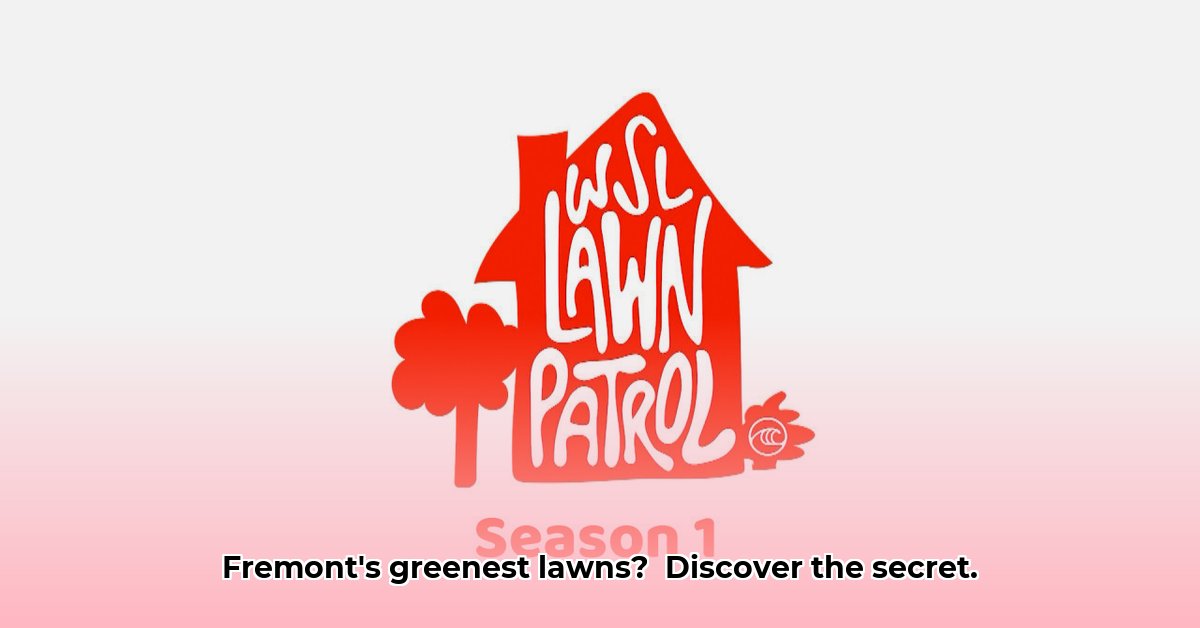
A Greener, Healthier Lawn: The Fremont Approach to Sustainable Landscaping
A vibrant, healthy lawn is a source of pride, but traditional lawn care practices often come at a steep environmental cost. In water-conscious Fremont, California, sustainable landscaping is not just a trend—it's a necessity. This guide provides actionable steps to transform your lawn into a beautiful, eco-friendly oasis, saving you water, money, and reducing your environmental footprint. We’ll explore water-wise irrigation, native plant selection, chemical-free pest control, and soil health optimization—all tailored to the unique Fremont climate. For more landscaping ideas, check out this helpful resource: Fremont Landscaping.
Key Sustainable Landscaping Practices: A Checklist for Success
Achieving a sustainable lawn involves a multi-pronged approach. The following key practices form the foundation of a healthy, eco-friendly landscape:
- Water-Wise Irrigation: Optimize water use with efficient irrigation techniques (e.g., drip irrigation, soaker hoses).
- Native Plant Selection: Choose drought-tolerant native plants adapted to Fremont's climate.
- Chemical-Free Pest Control: Minimize or eliminate the use of harmful pesticides and herbicides.
- Composting and Mulching: Recycle yard waste and use organic mulches to improve soil health and retain moisture.
- Soil Health Optimization: Improve soil structure and nutrient content for better water retention and plant growth.
Detailed Steps for a Sustainable Fremont Lawn
1. Water-Wise Irrigation: Making Every Drop Count
Traditional sprinklers waste significant amounts of water. Drip irrigation and soaker hoses deliver water directly to plant roots, minimizing evaporation and runoff. Smart controllers further optimize water usage by adjusting watering schedules based on weather conditions.
- Step 1: Assess your lawn's water needs based on grass type, soil, and sun exposure.
- Step 2: Install a smart irrigation controller to automate and optimize watering.
- Step 3: Replace sprinklers with drip irrigation or soaker hoses for targeted watering.
- Step 4: Water deeply but infrequently to encourage deep root growth.
- Step 5: Regularly inspect for and repair any leaks in your irrigation system.
2. Native Plants: Beauty That Thrives Naturally
Native plants are perfectly adapted to Fremont's climate, requiring less water and fewer pesticides than non-native species. They're more resilient and contribute to a thriving local ecosystem.
- Step 1: Research native plants suitable for your specific yard conditions (sunlight, soil type).
- Step 2: Source plants from local nurseries committed to sustainable practices.
- Step 3: Plant according to instructions, ensuring proper spacing and soil preparation.
- Step 4: Water new plants regularly until established, then gradually reduce watering.
3. Ditching the Chemicals: A Healthier Lawn, a Healthier Planet
Synthetic pesticides and herbicides harm beneficial insects, pollute groundwater, and pose health risks. Sustainable alternatives include:
- Mulching: Use organic mulch to suppress weeds naturally and improve soil health.
- Beneficial Insects: Attract beneficial insects to control pests naturally by diversifying your plant life.
- Organic Pest Control (e.g., neem oil): Use organic pest control methods only as a last resort and always follow instructions carefully.
4. Composting and Mulching: Waste Transformation
Composting turns yard waste (grass clippings, leaves, etc.) into nutrient-rich soil amendments. Mulching helps retain soil moisture, suppresses weeds, and improves soil structure.
- Step 1: Gather yard waste and create a compost pile or use a compost bin.
- Step 2: Layer "greens" (grass clippings) with "browns" (twigs, leaves).
- Step 3: Regularly turn the pile for proper aeration.
- Step 4: Use the finished compost to enrich your soil.
5. Optimizing Soil Health: The Foundation of a Thriving Lawn
Healthy soil is crucial for water retention and plant health.
- Step 1: Perform a soil test (available through local agricultural extension offices) to determine your soil's pH and nutrient levels.
- Step 2: Amend your soil with compost to improve its structure and nutrient content.
- Step 3: Topdress regularly with compost to maintain soil health over time.
Fremont Resources for Sustainable Landscaping
- Local Nurseries: Search online for Fremont nurseries specializing in California native plants.
- Water Conservation: Contact your local water utility (e.g., the Alameda County Water District) for water conservation tips and resources.
- Sustainable Landscaping Information: Consult local and state government websites for guidance on sustainable landscaping practices. The California Native Plant Society website (https://cnps.org/) is a valuable resource.
Conclusion: Embrace Sustainable Lawn Care in Fremont
By adopting these sustainable practices, you can create a beautiful, thriving lawn while conserving precious water resources and protecting the environment. Remember, a sustainable lawn is an investment in both your property's beauty and the health of our planet. Start small, choose one or two practices to implement, and gradually build towards a fully sustainable landscape. Your efforts will pay off in a healthier lawn, a healthier planet, and a greater sense of pride in your sustainable contribution to Fremont.